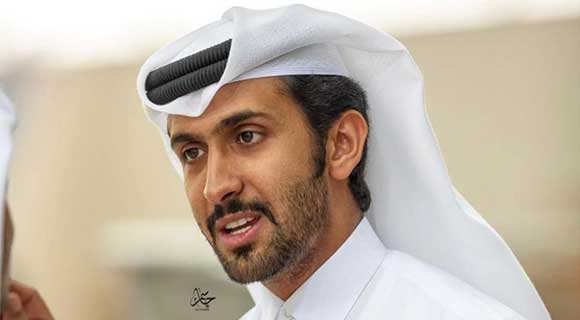Hassan Al Mannai: Mastering the Art of Equestrianism
By Space Coast Daily // July 1, 2019

Horses and equestrians work in partnership to put up an awe-inspiring show to viewers. However, behind those perfect-rides lie a lot of practice, resilience and perseverance, says Hassan al-Mannai, Head of Arabian Horse Show Section, Qatar Racing & Equestrian Club (QREC) and member of the European Conference of Arab Horse Organizations (ECAHO) Executive Committee Member.
To master the art of Equestrianism, the first and foremost attribute required in both horses and their horsemen is inbuilt strength. A strong leg is crucial to build confidence between you and your horse.
A strong leg also means you maintain control without kicking your horse. Your core strength is important to bring in composure and balance in your movement.
On the other hand, flexibility is key to perform the best jumps, half-halts and other moves in tandem with your horse’s moves. Equestrians must include flexibility exercises like yoga and stretching in their routine gym hours in order to stay agile to avoid becoming stiff.
Endurance is another important aspect. Arabian horses are the best breed when it comes to endurance, silently surpassing their counterparts. This is why equestrians riding Arabian horses must work specifically on their endurance to match it with their riding partner.
Beginners must start spending time at the barns to understand the psychology of horses. The mental connection between a horse and its rider is the key element in mastering the art of equestrianism.
Besides, there are basic equestrian disciplines, rules, faults and penalties, which must be learned early on.
Fixing a schedule for your practice and sticking to it is essential. The daily practice lies at the heart of mastering any game, be it equestrianism or any other sport. After all, equestrianism is about two partners, which is why it is important to create a horseback riding schedule keeping both the rider and the horse in mind.
It is crucial to set days when the team will be working on transitions, jumping, singles, full course, and so on. A fixed schedule will make the daily training at the barn organized, the team’s goals will be clearer and they will be able to better their performance with each passing week.
Focus is another decisive aspect of equestrianism, so is staying alert.
Eating well is important for the equestrian and his/her horse. Equestrian sports require the equestrian and the horse to stay in shape, have good stamina and large amounts of energy in order to stay focussed and perform well.
Lastly, taking adequate rest is critical. Neither the equestrian nor the horse should exert too much as proper sleep and relaxation go a long way in achieving mental balance and endurance.
An exhausted equestrian or horse often appear lame to judges, says Hassan Al Mannai, ECAHO National Judge of Arabian Horse.
Equestrians must also master time management in order to succeed at events and competitions. While there are no perks for completing before the optimum time limit, penalties follow for those who exceed the time limit.
Budding horsemen must choose equestrian sports of their interest like dressage, show jumping (stadium jumping), eventing, and triathlon, as well as understand the basics at the barns, and advanced levels techniques at events.
CLICK HERE FOR BREVARD COUNTY NEWS














